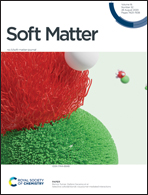A constitutive hemorheological model addressing the deformability of red blood cells in Ringer solutions
Abstract
Red blood cells (RBCs) can deform substantially, a feature that allows them to pass through capillaries that are narrower than the largest dimension of an undeformed RBC. Clearly, to understand how they transport through our microcirculation, we need a constitutive model able of accurately predicting the deformability of RBCs, which seems currently unavailable. To address this void, we herein propose a new model that accounts for the deformability of RBCs by modeling them as deformed droplets with a constant volume. To make sure the model is by construction thermodynamically admissible we employ non-equilibrium thermodynamics as our tool. Since RBCs are merely droplets with the inner fluid exhibiting a higher viscosity than that of the outer one, RBCs are described by a conformation tensor constrained to have a constant determinant (volume). The model predicts the second normal stress coefficient in steady-state simple shear flow to first shear thicken and then shear thin, which is an unexpected behavior; however, we cannot judge whether such a prediction is aphysical or not due to unavailable experimental rheological data in the literature. We show that the new model is capable of addressing the deformability of isolated (very low hematocrit) RBCs in simple shear and the shear viscosity of non-aggregating blood. As derived the model addresses only non-aggregating blood, but can very easily be generalized to account for aggregating blood.



 Please wait while we load your content...
Please wait while we load your content...